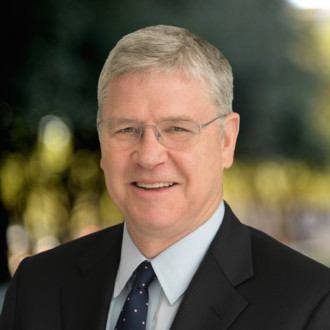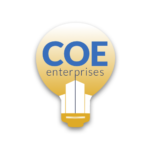

Bio
Chuck Watters is a senior managing director and is the officer responsible for new business procurement and execution, development, acquisitions, asset and property management activities in the Mid-Atlantic region. He currently serves on the Finance, Operations & Tenant Relations Committee. Since joining Hines in 1989, Watters has been involved in a variety of development projects and transactions aggregating more than 15 million square feet.
Watters earned a BA in History from Colgate University and an MBA from Columbia University.
Show Notes
- He is a “City Head” who oversees Pennsylvania through Virginia. Is a “sounding board” for the Project leaders in the market and a “Mentor” for the younger associates. (4:45)
- Leadership role mostly, but has some involvement in project business (6:00)
Origins & Education
- “Grew up” in Erie, PA for most of his youth. His Dad started an assembly machine industries for various manufacturing industries (6:45)
- Began working for his Dad after college (8:50)
- Attended Colgate University in Hamilton, NY- History Major (9:30)
- Decided to attend Columbia Business School in New York (10:45)
- Finance major
- Started working at PepsiCo after school (12:25)
- His friend, Tommy Craig, started at Hines right after school who told him about real estate (12:50)
- Thought he’d want a basis in corporate finance (13:30)
Career Trajectory
- Met Scott Malkin of W&M Properties and he joined them (14:10)
- Was there 5 1/2 yrs.- Acquisitions & Asset Management (15:15)
- Ownership interest in the Empire State Building among other large office properties (15:50)
- Laurence Wien was the “deal structurer”- Chuck learned quite a bit from him (16:20)
- From 1984 to 1989 (17:55)
- Joined Hines to become an Asst. Project Manager in NY on 450 Lexington Ave. (18:00)
- Historical redevelopment of an old office Post Office building (18:45)
- First day on job he was “watering the project down” as it was being demolished (19:25)
- Built over the tracks of Grand Central Station (20:20)
- Structural grid of office building was not lined up with the foundation with angled columns (21:00)
- Learned a considerable amount about construction (21:50)
- Pile of documents to review on first day on the job-ground lease, agreements, etc. (23:45)
- Moved into leasing quickly after the building was completed to lease up 50% of the 900,000 s.f. building (24:30)
Hines History & Career
- Hines– Gerry Hines graduated Purdue in mechanical engineering (27:00)
- Moved to Houston and built an industrial building on a lark and began his company (27:40)
- His first big opportunity was to develop the Shell Oil headquarters and the Galleria in Houston (28:00)
- Not put all eggs in one basket-
- Institutional partners
- Geographical expansion
- Tom Swift and Ken Hubbard started growing the geographic footprint to include New York and San Francisco in 1981 (29:00)
- Ken Hubbard was the leader in New York and secured two significant development opportunities there when the office opened
- EF Hutton Building and a spec building adjacent
- Lipstick Building (29:45)
- Capital from the Kuwait Investment Office at the time
- Quality architecture with distinctive properties became the mantra for HinesPhilip Johnson, HOK, SOM were the architectsHis project (450 Lexington) was the third project in NY (32:50)
- 383 Madison was his 2nd project (SOM designed) (33:30)
- Bear Stearns Headquarters- moved from 245 Park Ave.
- Kuwaiti investment partner
- Zeckendorf had office space there before- In house architect was I.M. Pei (35:45)
- Stayed in NY for 9 years
- Approached to move to Detroit to take on the Renaissance Center project (37:10)
- Gave him his own office (37:55)
- Redevelopment of the project
- SOM architect said that you could throw $50MM at the building and it wouldn’t make any impact (38:45)
- Project Needs
- Main improvements to take down the berms in front of the building (39:05)
- Change facade (39:20)
- Build a winter garden (39:30)
- Improve circulation in the building (39:40)
- GM wanted to put a sign on the building (42:00)
- First 20 stories of building and had to strengthen the structure connecting the exterior elevators on the hotel building (43:05)
- 29 individual projects on the property (44:20)
- Managing Compuware Headquarters (46:00)
- Guardian Building renovations (46:20)
- Mostly fee development (46:45)
- GM hired them to both redevelop and asset manage the transition of the Renaissance Center while being redeveloped (47:30)
- Gerry Hines and he came to Orlando to meet the Performance Arts opportunity (53:00)
- Suggested that he would be a good fit in Washington
- Chris Hughes was CEO of the East Region who brought him to DC from Orlando after Detroit (54:40)
- Designated to take over the office when Bill Alsup was finishing City Center (55:15)
- Came in 2009 which was a challenging time in the market (56:10)
- AAMC project was a fee development (57:20)
- MaceRich JV on Tysons Tower at Tysons Corner Center (57:30)
- Needed office expertise to develop a tower at the center (58:45)
- One of most satisfying projects he had worked on- first office in Tysons in the new wave of development (59:00)
- Kettler’s residential property (The Vita) came in after Hines had built the office building (59:50)
- Hines usually “reinvents itself” during downturns (1:01:45)
- After the S&L crisis in 1991- European expansion and an acquisitions (investment management) program evolved (1:02:15)
- After the tech downturn- the Fund business for Hines developed (1:02:50)
- After the GFE- they developed a research group and got into multifamily development activities (1:03:10)
- Parks at Walter Reed (1:04:00)
- Four multifamily projects in various stages of development
- Acquiring multifamily properties as well as development (1:04:45)
- Willowick is new property management entity (1:05:00)
- City Center Project (1:06:00)
- $80MM of predevelopment investment prior to having a capital partner (1:06:10)
- 7 city blocks under control…some projects continue to get the “green light” (1:07:00)
- Discipline is important; however, a project of the scale and quality like City Center (1:08:30)
- Capital Raising process (1:09:50)
- Capital Markets Group
- Core Plus Funds (1:10:15)
- Value Add Fund
- Development Fund
- If funds are over-allocated in markets they might go to one off 3rd party investors (1:11:30)
- Internal process initially to make decisions on capital raising (1:12:15)
- More capital now than in the past that doesn’t limit business (1:12:30)
- Group in Houston that helps with construction financing (1:13:00)
- Scale was important to build (1:13:45)
- Two types of companies (1:14:00)
- Centralized and big
- Decentralized- Hines was that way, but now consolidating more (1:14:40)
- Difficult for other companies to compete at the same scale (1:15:15)
- Two types of companies (1:14:00)
- Execution is “one project at a time” regarding reputation (1:15:45)
- Parks at Walter Reed– JV with Urban Atlantic (1:16:50)
- Two parts of the project (1:17:00)
- Horizontal project- Divide by function and geography (1:17:45)
- Building projects- Either Hines or Urban Atlantic will lead each project (1:18:20)
- Take down parcels by joint decision (1:19:45)
- Sometimes land partners are passive in development partnerships (1:20:15)
- Easier if Hines is sole GP (1:21:00)
- Urban Atlantic’s strength is in community outreach and in affordable housing (1:21:40)
- Urban Atlantic typically hire 3rd party construction management while Hines does their own construction management (1:22:30)
- Other skill sets are analogous
- Two parts of the project (1:17:00)
- On larger scale mixed use projects Hines would pursue RFPs (1:24:00)
- Multifamily projects and Industrial projects are new business thrusts (1:25:20)
- Hartland project in Loudoun County, VA– single family lot development (1:26:00)
- Life Science is another new initiative
- Office approach (1:27:45)
- Trophy (Class A space) will continue to be attractive going forward (1:28:00)
- Mass Timber is an active product they are delivering now (1:28:40)
- Franklin Square building was adapted for the Washington Post’s use with significant renovation (1:29:15)
- Some buildings can be adapted to residential (1:30:20)
- Hines Square– flexibility for tenants (1:33:30)
- Will CEOs require people to be in the office? (1:36:15)
- Activity begets activity (1:34:20)
- Buying and developing constantly
- Working with DMPED & associations
- Activity in local market
- Local office has 173 people- skews heavily to property management teams (1:36:00)
- DC office is very important at Hines (1:36:45)
- Ongoing interest in being in the market (1:37:15)
Company Strategy & Hiring
- Hiring strategy (1:37:45)
- Want people who are passionate toward the business (1:38:00)
- Looking to background to bring in people with experience in the product type where the need is now (1:38:40)
- Imagine being on a bus ride across the country to want to be with that person (1:39:20)
- Hire MBAs and others, including interns to understand their capabilities in advance (1:40:00)
- Undergrads come in as analysts and work a couple years to become a development associate (1:41:30)
- Retention (1:42:30)
- As much work as ever, but the deals are challenging (1:43:00)
- Younger generation is seeking for more recognition (1:43:50)
- 2020 was one of Hines’ best years in the face of uncertainty (1:46:00)
- Ground up “co-living” building at Parks at Walter Reed (1:47:30)
- Value proposition important relying on their research group (1:49:10)
- ESG is deep in Hines’ DNA (1:50:00)
- First developer doing dual pane windows (1:50:15)
- Always had thread of environmental sensitivity (1:50:30)
- Geothermal technologies (1:51:00)
- What is realistic goal for carbon neutrality? Looking at 2040 (1:51:25)
- Social- looking to improve their diversity (1:51:50)
- Internet of Things will be an important trend to stay ahead of now (1:52:50)
- Hines Conceptual Construction group (1:53:50)
- Work on experimental technology including AI
- Risk mitigation (1:55:45)
- Look at conceptual issues
- Staff a project appropriately (not too many or too few on a job) (1:56:30)
- Don’t hold out for the last dollar (1:57:00)
- Don’t over lawyer a project (1:57:15)
Personal Philosophy
- Life priorities (2:01:00)
- Giving priority to family is important (1:58:00)
- Bringing family together
- Mentoring is important at work (1:58:50)
- Volunteer to teach and guidance (1:59:20)
- Giving priority to family is important (1:58:00)
- Wins
- Assuming the leadership mantle from Bill Alsup to a broader opportunity for people can look at more diverse opportunities than just City Center (2:00:20)
- Renaissance Center Project- Olympic Torch came into the Winter Garden (2:01:25)
- Losses
- Two acquisitions that should not have been made (2:02:00)
- Surprises
- Still learning things after 33 years (2:03:30)
- Advice to 25 yr. old self
- Try and figure it out by yourself, but don’t hesitate to ask for help if stumped (2:03:25)
- Commit oneself to taking on a project (2:04:00)
- Billboard Statement- “Do the Right Thing” (2:04:30)
Postscript
- Rameez Munawar takeaways:
- Hines exudes quality in everything they do
- Hines constantly reinvents themselves to improve
- Hines is willing to take on challenges that other companies wouldn’t
- Hines has mastered international scale
- Thought process has changed over time
- Getting ahead of trends
- Hines/ULI Competition experience- 30 page project brief and prepare a proposal in two weeks
- Competing with 182 proposals
- He was on the team that won the competition representing the University of Maryland
- They won back to back years
- Catalyst to students
- Eternally grateful for the experience
- He joined Gerry Hines for dinner and thought it was a great experience
- Future proofing the office product today- change perspective on office use going forward
- Renaissance Center project in Detroit
